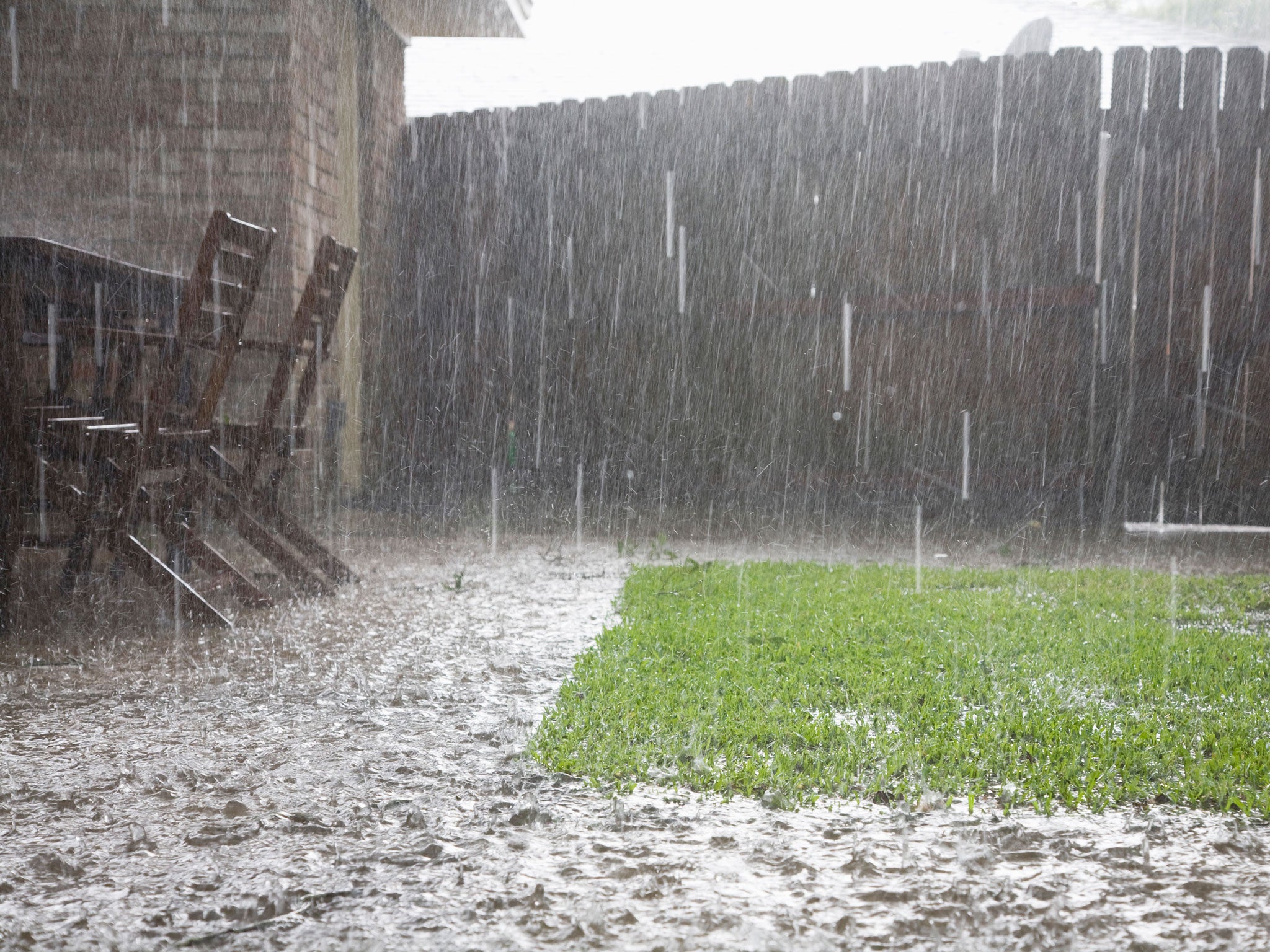Anna Pavord: 'In a wet winter, gardens need a path to stop you getting stuck'
Our gardening correspondent reveals how to keep your feet dry and your grass grassy, as you move round your plot

The Geological Society has just come to the end of a year celebrating mud. They make it sound unusually romantic. "Mud represents both an end and a beginning," they suggest. "The end of the cycle of erosion and transport and the beginning of the generation (through burial and transformation) of new materials of great value to society."
It's good to hear positive thoughts on mud. There haven't been many of those since Flanders and Swann sang its praises. There's a lot of it around down here in West Dorset at the moment and I need to find its loveable side. "Just be grateful you haven't got floods," said a friend severely. And yes I am. Profoundly grateful.
Plants can't use mud, because by its nature, it's a transitory medium. They use bog, but that's more permanent. Mud builds up in our lanes when rain washes out soil from the banks and waves of half-composted leaves are swept up in the mix. Because it's so soft and sticky, it gets churned up easily. Deer feet, sheep feet, cattle feet, human feet, tractor tyres, all leave their temporary marks, wiped out by the next impression. In these shifting miniature landscapes, there's no chance for a plant to get established. Not even American land cress, which is the most opportunistic coloniser I know.
At least, under the mud in the lanes, there's a relatively hard surface. Lawns aren't so robust. In a wet winter like this, any path you take at all regularly over grass, turns to mud before you know it. "Lines of desire" they call them (though carting stuff to a washing line surely scores low on anyone's list of desires). But these are the things you need to think about when you are first laying out a garden. Blow matrix planting. Blow raised beds and barbecues. How are you going to keep your feet dry and your grass grassy, as you move round your plot in a long, wet winter?
In older gardens, a practical path layout may already be in place. In terraced houses of the 19th century, the path down the back garden would often be dressed with cinders. Coal was the most common fuel and, before the age of bin men, householders had a lot of clinker to get rid of. The principle was good: here was a waste product that had to be dealt with, it was free and it sopped up the wet.
In our garden, we use woodchip on the paths on the bank and for the same reasons. We have tree work done every winter and the stuff that is not worth logging up goes in the chipper. There is plenty of it and we don't have to pay for it. A professional garden designer would advise putting Terram, or some other kind of membrane, under the wood chip. There are practical advantages certainly. It stops the top dressing being gradually trodden down into the earth underneath, and it slows down the rate at which weeds seed into it.
But I hate the way that wood chip (the same is true of gravel and pebbles) skids around when it's laid over these geotextile membranes. And though they are porous, allowing water to drain through to the ground beneath, I still feel they are stifling the ground. Insects are trapped under it. Birds don't find the kind of morsels they'd be able to peck up if the textile wasn't in the way. And most of all I hate the way that, however well buried the edges may be when it is first laid, membranes seem too often to wriggle free, offering up fraying wisps of black plastic for the gardener's delight.
Close to the house, we use pebbles and 10mm gravel for paths. Visually, there's an interesting difference between the two. For large areas, gravel is probably better (more comfortable to walk on), and the 10mm grade doesn't stick in the grooves of your boots in the way that 6mm gravel does. The brindle mixes are easier on the eye than the glaring cream kind called Cotswold. Outside of the Cotswolds it draws far too much attention to itself.
Garden designers are also keen on hoggin for paths. It's a mixture of clay, sand and gravel, which when properly rolled, binds together to make a reasonably durable surface. The best hoggin paths are made with a "batter", a slightly humped profile, so that water is shed from the centre to run along gutters either side. Hoggin looks good, but it gets waterlogged and then sticks to the bottom of your boots. In really heavy rain, the surface can wash away altogether, especially if the path is on a slope. But at this stage of the gardening year, I'm keen to explore another way of dealing with mud. It's called staying in bed.
Join our commenting forum
Join thought-provoking conversations, follow other Independent readers and see their replies
Comments